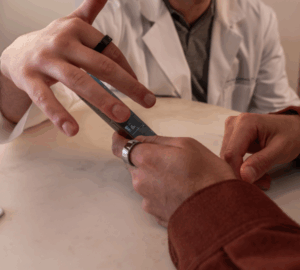In 2020, the University of California, San Francisco (UCSF) launched a large-scale COVID-19 study, TemPredict, which aimed to discover if Oura Ring data could help identify signs of COVID-19. Early results revealed that Oura’s temperature data could help spot when people’s temperature is going above their normal and aid in early illness detection.
Today, primary TemPredict results have been published in Nature – Scientific Reports. The diverse research team from UCSF, UCSD, MIT, and other universities found that multiple biosignals from the Oura Ring (heart rate, heart rate variability – HRV, respiratory rate, temperature, and activity) could collectively detect signals associated with the onset of COVID-19 “an average of 2.75 days before participants got diagnostic testing.”
Disclaimer: This research study was sponsored in part by Ōura. The purpose discussed in the study has not been approved by the FDA and the Ōura ring is not intended by Ōura to be used in this manner.










